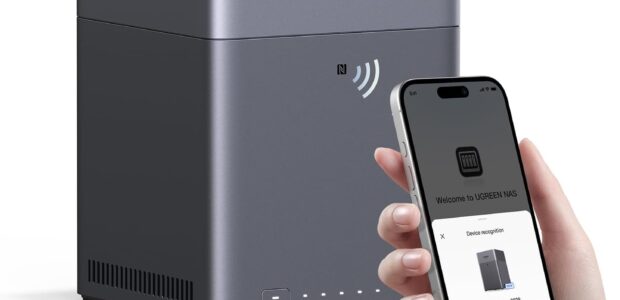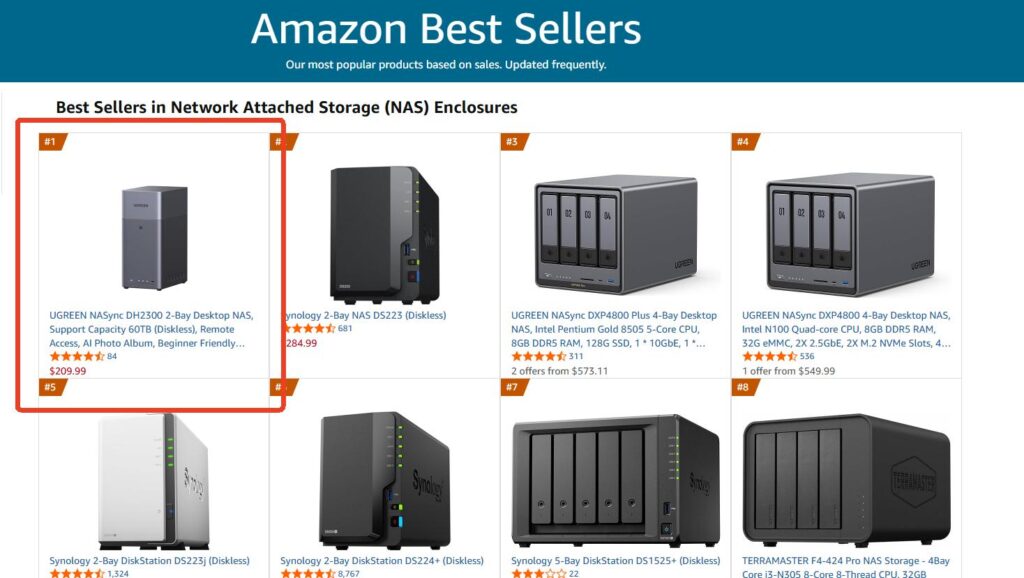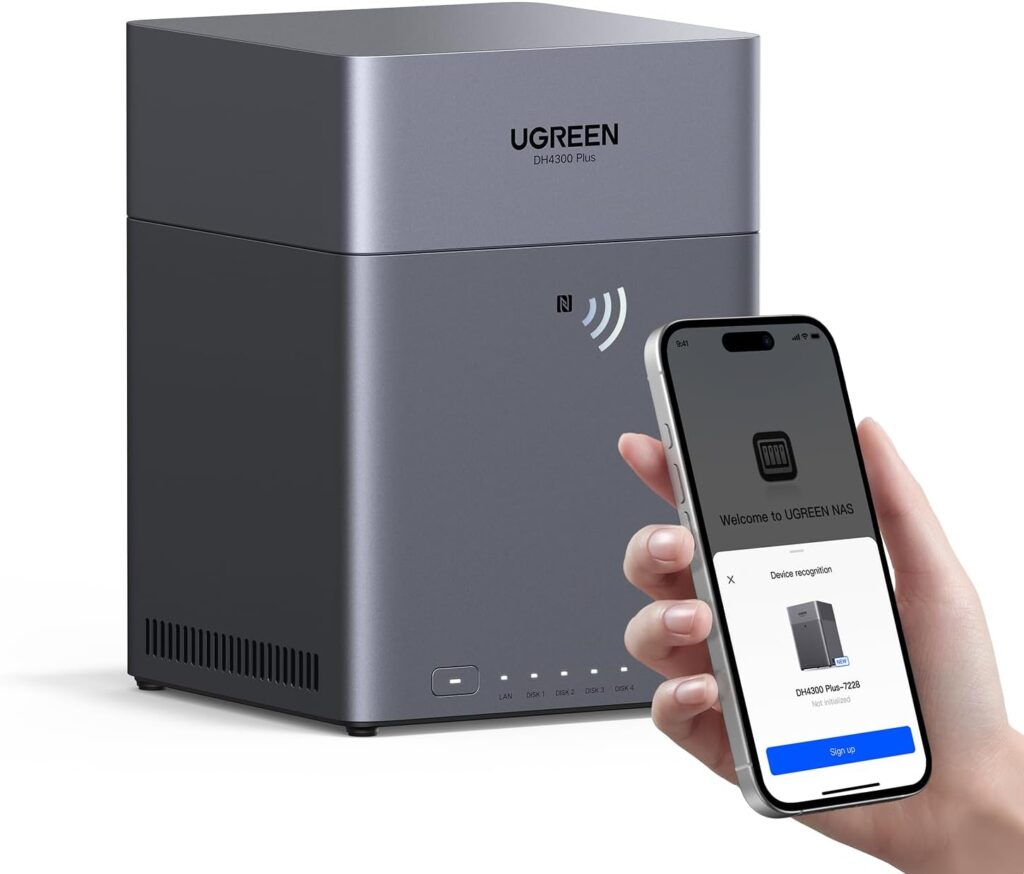
As a NAS user of over ten years, if you ask me whether a NAS is truly useful for home users, I will undoubtedly tell you: Absolutely! Over the past decade, all the computers, phones, media players, streaming devices, and projectors in my home have accessed work documents, audio/video files, and photos stored on the NAS over the network.
The most significant role the NAS plays in my home is centralizing the storage of this content for access and use by other devices. This eliminates the need to scatter files across different devices. Not only does this make management much more convenient, but it also reduces the storage capacity requirements for those other devices. Plus, I don’t have to worry about the risk of these files being damaged or lost.
Of course, a NAS isn’t just for content storage. It also handles downloading and media playback functions. Docker, virtual machines, Home Assistant Server (HASS)… many advanced applications can be run on a NAS. However, these advanced features might not be essential for the average home user.
So, the question arises: How high is the learning curve for a NAS? Can someone with no prior experience quickly learn and master its setup?
Objectively speaking, for complete beginners, there is certainly a learning curve involved with using a NAS. Deploying many features often requires some technical knowledge. However, with the rise of domestic brands, NAS devices have become significantly easier to use. We can now perform the setup and operation of most features entirely through a mobile app, which is great news for the average home user.
The UGREEN NASync DH4300 Plus reviewed here is a very user-friendly, entry-level NAS. It holds the #1 spot in Amazon’s Best Sellers in Network Attached Storage (NAS) Enclosures and has received positive feedback from most users. Priced at $209.99, it meets our four core needs: storage, backup, sharing, and entertainment.

1. Hardware Configuration of the UGREEN NASync DH4300 Plus

The UGREEN NASync DH4300 Plus uses an ABS engineering plastic for its casing. This is clearly aimed at keeping costs down, which is understandable for an entry-level NAS product. However, there’s no need to worry about its cooling performance; with proper thermal design, this shouldn’t be an issue.
On the back panel, you’ll find one 2.5GbE network port, two USB 3.2 Gen 1 ports, and one HDMI port. Complementing these, the front features one USB Type-C 3.2 Gen 1 port. This selection is more than adequate for connecting external storage, a UPS, a wireless network card, and other peripherals, offering pretty good expandability.
Notably, this NAS also includes NFC support, allowing for quick device initialization with a simple tap. Many new users are unsure how to configure a NAS when they first get one. This feature on the UGREEN NASync DH4300 Plus is very helpful for beginners, making the initial setup effortless.
It features a two-part, top-and-bottom structure. The top cover is magnetically attached, and the drive trays are inserted from the top. Therefore, when installing hard drives, you need to secure the screws on both sides of the tray.
The drive trays have thick rubber pads on both sides and also incorporate spring-loaded arms. This provides good cushioning and protection for the hard drives, helping to extend their lifespan and reduce the risk of damage.
The UGREEN NASync DH4300 Plus doesn’t use an x86 architecture for its hardware but rather an ARM architecture. However, this customized UGREEN ARM processor (A55-A76, octa-core) offers fairly strong performance. Furthermore, ARM holds advantages over x86 in terms of cost, power efficiency, codec support, and NPU acceleration, making it an excellent choice for this category of entry-level NAS devices.
2. Effortless First-Time Setup
Many new users don’t know how to proceed with the initial setup when using a NAS for the first time. In terms of ease of use, the UGREEN NASync DH4300 Plus excels; it presents no barrier for beginners and has a very low learning curve. This is one of this NAS’s most commendable strengths.
You can perform the setup using either a phone or a computer. Let’s use a phone for a simple demonstration. First, install the hard drives into the NAS, then connect the power cord and network cable. The NFC on the UGREEN NASync DH4300 Plus is quite useful. On first use, if you haven’t downloaded the app yet, tapping your phone will take you to a relevant NFC page. If the app is already installed, tapping will initiate quick registration. Download the “UGREEN NAS” app on your phone.
Open the “UGREEN NAS” app, register for a new account, and then search for devices. As long as your phone and the NAS are on the same local network, the new device should quickly appear in the app’s interface.
Click ‘Next’ to begin the account localization configuration. The system will automatically configure UGOS Pro, which takes a short while. Please wait patiently. Once the configuration is complete, you’ll enter the welcome screen and begin the introductory tutorial.
Next, we need to configure the storage by creating a storage pool. Several different schemes are offered here; we choose based on our needs and the number of hard drives. The available RAID types include Basic, JBOD, RAID 0, RAID 1, and RAID 5. Detailed explanations of these RAID types can be found online, so we won’t elaborate here. If you regularly store important data on the NAS, RAID 5 is recommended, but it requires a minimum of three drives. If the data is important and you don’t typically maintain separate cold backups, choose RAID 1 (requires two drives). If you prioritize maximum capacity, have a habit of keeping cold backups for critical data, and aren’t overly concerned about drive failure data loss, choose RAID 0.
I’m using two drives and selected RAID 0 mode, which can effectively improve read/write performance. The system will then format the hard drives. So, if you’re using old drives that contain data, be sure to back them up beforehand.
After the storage configuration is complete, configure the storage folders. Reaching this step means the basic setup of the new device is finished, and you can enter the app’s main interface. Isn’t that incredibly simple?
3. The Core Function of a NAS – The Storage Hub
For most users, the primary function of a NAS is to act as a storage hub. You can store all your audio/video files, photos, work documents, etc., on the NAS. When other devices need access, they simply connect to the NAS over the network and can then copy, paste, modify files, etc., just as if they were working with a local hard drive. The biggest advantage of this centralized storage is that managing your data becomes much easier. Our phones, computers, tablets, etc., also don’t need to be purchased with higher storage tiers.
On Windows systems, you can access files stored on the NAS directly through File Explorer using the SMB protocol. It feels no different from accessing a local hard drive.
Since the UGREEN NASync DH4300 Plus has a 2.5GbE port, the transfer speeds over the local network can basically max out the connection.
This NAS supports mobile photo backup, including Live Photo backup and restoration. Whether you’re backing up to the NAS for viewing or downloading photos back to your phone, it works flawlessly.
The AI features on the UGREEN NASync DH4300 Plus are quite well implemented. It supports AI settings for person recognition, text recognition, duplicate photo detection, scene/object recognition, and screenshot recognition. Since this leverages the processor’s NPU acceleration, the experience is genuinely smooth. You can see that the recognition accuracy in the images is very high.
The benefit this brings is the ability to find specific photos much more easily from the large collection stored on the NAS. For example, if you need to find a particular photo containing people, you can search based on the AI-model-identified person categories. For landscape photos, you can search based on the geographical location information from when the photo was taken. It also helps clean up photos from similar scenes, saving storage space.
4. Entertainment Applications
The main entertainment setups in my home are the media player in the study and the projector in the bedroom.
Accessing the UGREEN NASync DH4300 Plus from the media player is straightforward. From the player’s file manager, access via the SMB protocol, enter the NAS’s username and password, and you’ll go directly into the NAS folders.
You can then play music just like local files or add these music files to the player’s music library.
The built-in music application in the UGREEN NASync DH4300 Plus system supports decoding almost all common lossless music formats. Combined with the large capacity storage advantage of a NAS, this is a very powerful feature, making it fully capable of serving as a music server.
The operation on the projector is the same: access the NAS via SMB protocol and start playback. The process is very simple.
Storing music and movie files centrally on the NAS, and having players access the NAS for playback, eliminates the need to equip each player with its own separate external storage device. This not only saves money on buying those storage devices but also removes the worry of accidentally damaging them.
Actually, UGREEN’s own Video Center is quite impressive. It integrates with TMDB to automatically generate a poster wall and supports smooth playback of various high-quality sources like Blu-ray remux files, HDR, and Dolby Vision content.
Managing your video library is very convenient. During playback, you can download subtitles online or add local subtitle files from your computer. It also supports mounting strm file resources from cloud drives. Furthermore, after a system update in May, playing videos gained support for skipping intro/outro sequences and HDR.
Additionally, the TV client features audio passthrough, allowing you to fully integrate with local equipment for a home theater audio setup. And let’s not forget, this NAS has an HDMI port, so it can also function directly as a high-definition media player.
Actually, UGREEN’s own Video Center is quite impressive. It integrates with TMDB to automatically generate a poster wall, offers online subtitles, and supports smooth playback of various high-quality sources like Blu-ray remux files, HDR, and Dolby Vision content. And let’s not forget, this NAS has an HDMI port, so it can also function directly as a high-definition media player.
5. Summary
Overall, the UGREEN NASync DH4300 Plus is a very capable entry-level NAS with decent features and adequate performance for its class. Its deployment is exceptionally simple; even complete NAS novices can get it up and running effortlessly. This makes it an excellent choice for home users like us.
